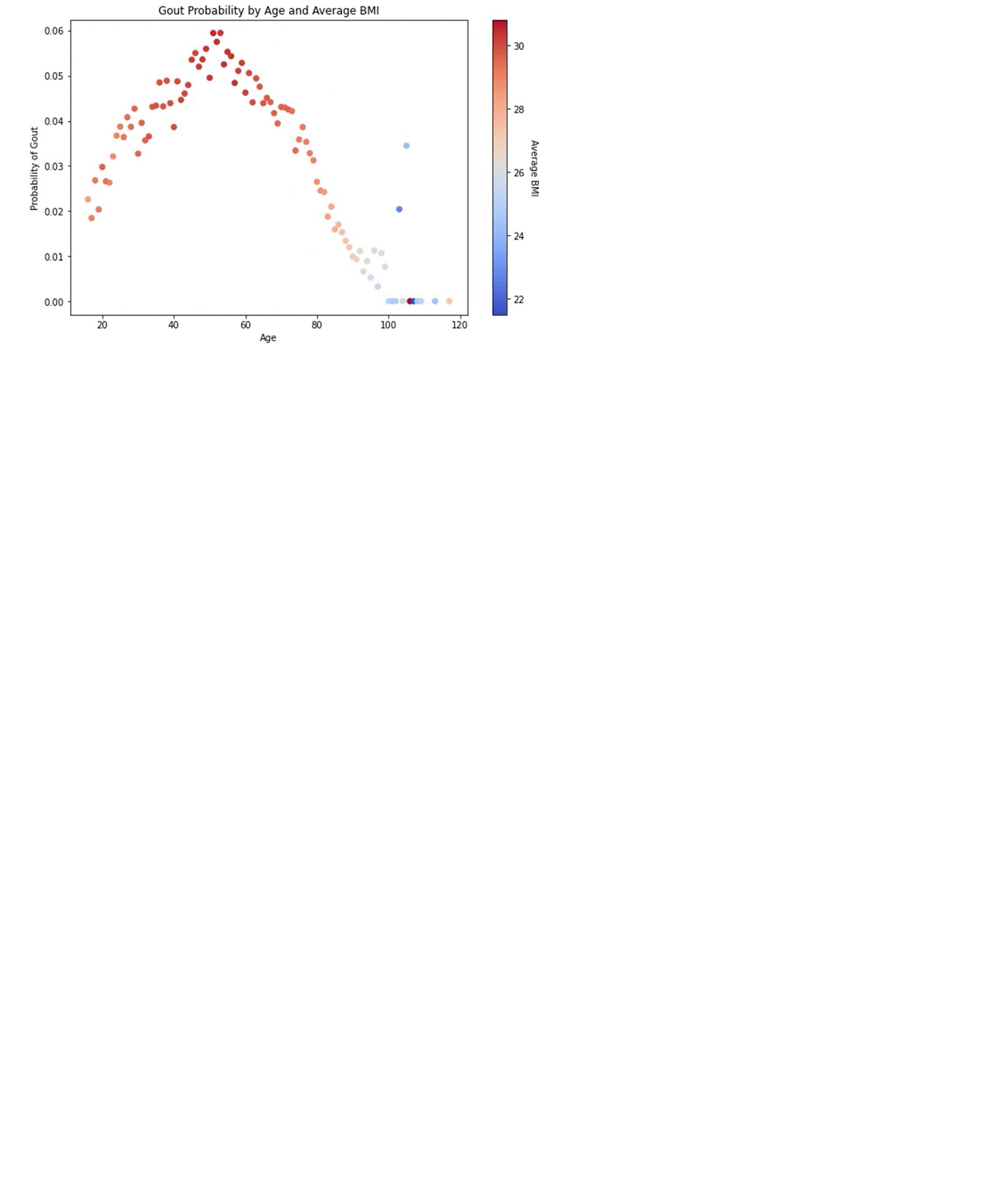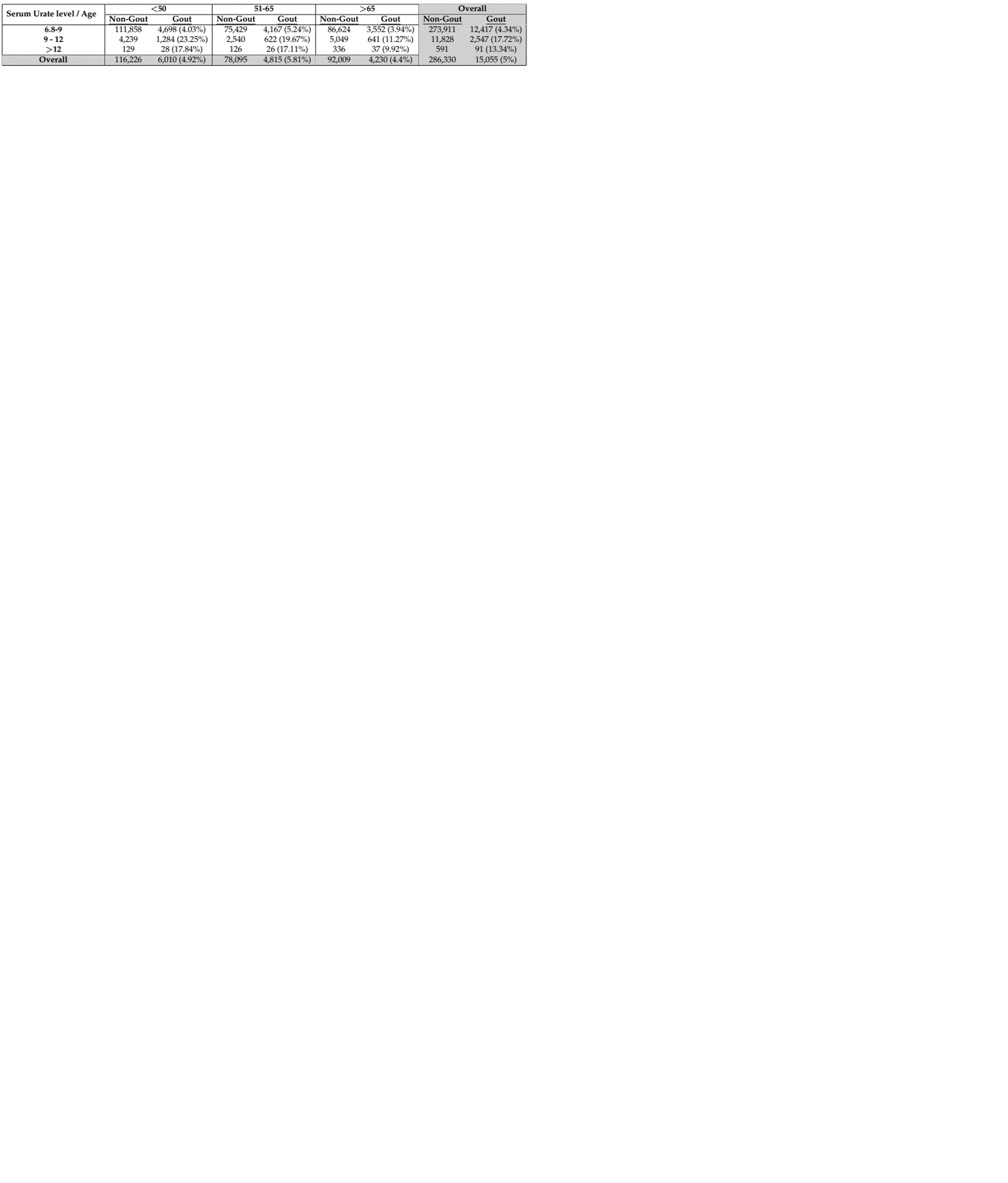Session Information
Date: Sunday, November 17, 2024
Title: Metabolic & Crystal Arthropathies – Basic & Clinical Science Poster II
Session Type: Poster Session B
Session Time: 10:30AM-12:30PM
Background/Purpose: Hyperuricemia (HU) is considered the most important factor preceding Gout. Yet, only a portion of hyperuricemic people develop Gout. Using a machine learning modeling with multiple variables may shed light on this phenomenon. The purpose of this study is to explore a multi factorial prediction model for gout of hyperuricemic people.
Methods: Data was extracted from Clalit Health Services national database. We included adults with at least two serum uric acid measurements of more than 6.8 mg/dL Patients with prior gout diagnoses or serum urate lowering medications were excluded. The primary outcome was gout diagnosis according to ICD-9 diagnosis recorded. A machine learning model, specifically XGBoost, was developed to predict gout development. Feature selection methods were used to identify relevant variables. The model’s performance was evaluated using receiver operating characteristic area under the curve (ROC AUC) and precision-recall AUC. Patients’ demographic characteristics, laboratory results, and medication records were used to train a risk prediction model. The model was split to train and test at a ratio of 80%-20% and evaluated using 5-cross validation. Feature selection methods were used to identify relevant variables.
Results: 301,385 individuals were defined as hyperuricemic of which 15,055 (5%) were diagnosed with gout. A 125 variable model was created using XGBoost model which demonstrated strong performance with a ROC-AUC score of 0.781 (95% CI 0.78-0.784, Figure 2A) and a precision-recall- AUC of 0.208 (95% CI 0.195-0.22, Figure 2B). NPV was 97.8%. Of the 125 features incorporated in the model, 7 were demographic, 10 were laboratory results of which 5 regraded serum uric acid, 22 were comorbidities and 86 were drugs. Interestingly, some of the features and not globally generalizable such as specific district location, and ethnicity. Altogether five different ways to measure SUA were used including first and second mean, maximum, minimum, median and last before outcome. When taking two of the 125 features: age and second mean SUA, we were able to see that 23.25% of patients less than 50 years old with SUA between 9 and 12 mg/dl developed gout, which is by itself a high incidence rate. Age by itself revealed a non-linear fashion of gout risk, considering age and BMI yielded a relation demonstrating a pick in the 6th decade of life of both BMI and gout incidence, and lower incidence of gout among elderly (age >80) with lower BMI.
Using this machine learning modeling for prediction gout yielded multiple variables which may lead to the investigation of multiple associations affecting progression to gout.
Conclusion: Using this machine learning modeling for prediction gout yielded multiple variables which may lead to the investigation of multiple associations affecting progression to gout.
To cite this abstract in AMA style:
Brikman S, Serfaty, MA L, Abuhasira, MD, PhD R, Schlesinger N, Rappoport N, Bieber A. Exploring Multi Factorial Model for the Prediction of Gout in Patients with Hyperuricemia [abstract]. Arthritis Rheumatol. 2024; 76 (suppl 9). https://acrabstracts.org/abstract/exploring-multi-factorial-model-for-the-prediction-of-gout-in-patients-with-hyperuricemia/. Accessed .« Back to ACR Convergence 2024
ACR Meeting Abstracts - https://acrabstracts.org/abstract/exploring-multi-factorial-model-for-the-prediction-of-gout-in-patients-with-hyperuricemia/


